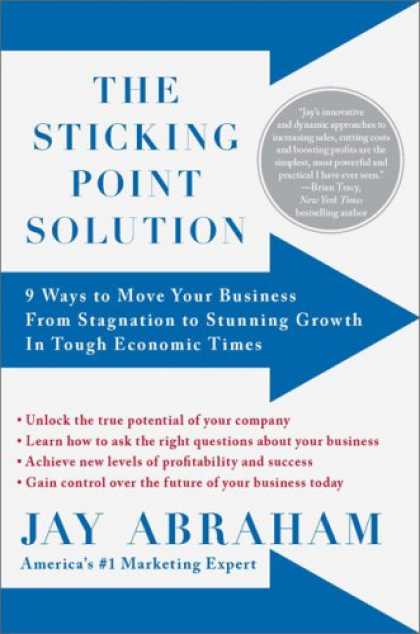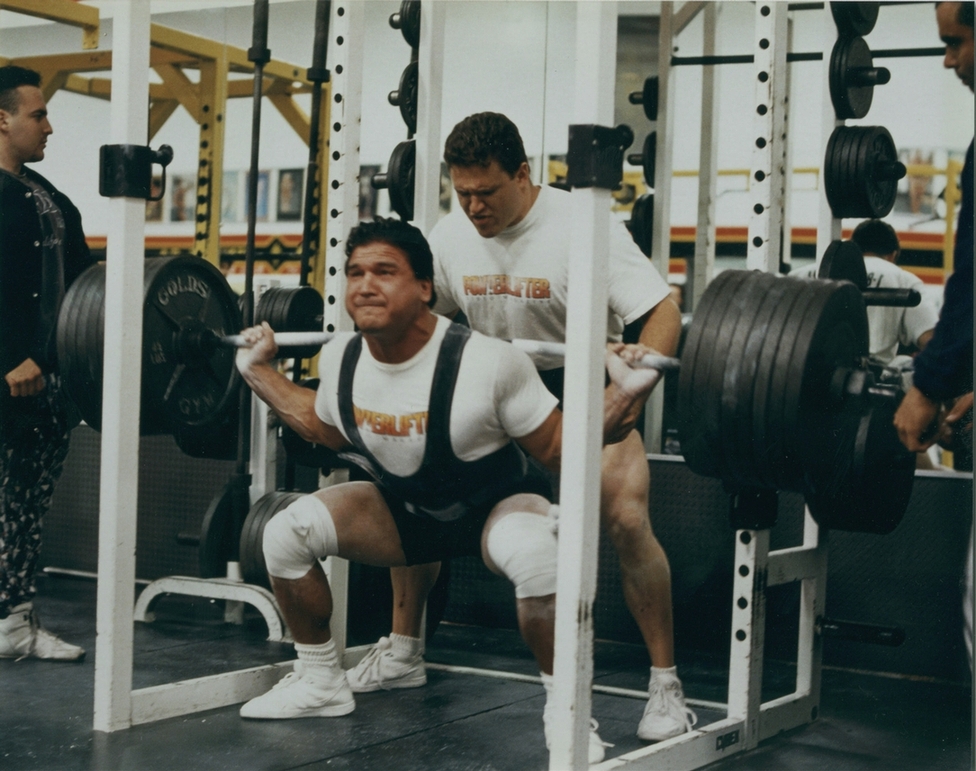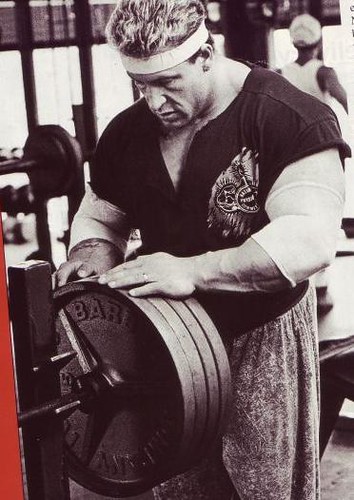
With pyramiding, I can work on strength, overall work capacity, some muscular and
strength-endurance, and even put some muscle on.
A pyramid is a set/rep scheme in which you increase the weight and decrease the reps done per set. There are various types of Pyramids: 10-8-6-4-2; 5-4-3-2-1; and how most of you might attempt a 1RM are all types of pyramids.
How I do mine is a little bit different.
First, you do a set with just the bar for 10-15 reps. You might even want to do another one. Add a small amount of weight to the bar, but not too much. Crank
out 10 reps or so. Add a little more weight to the bar (but again, not too much). Crank out 4-6 reps. This should all be VERY easy.
 At this point, you drop down to sets of one rep. Add weight in increments that make you feel comfortable. This could be as little as 20 lbs. for an exercise like presses, and as much as 90 lbs. for exercises such as squats or deadlifts.
At this point, you drop down to sets of one rep. Add weight in increments that make you feel comfortable. This could be as little as 20 lbs. for an exercise like presses, and as much as 90 lbs. for exercises such as squats or deadlifts.When it starts to get heavy, add weight in smaller increments. What you are doing here is basically going for your 1RM. When you get close to it, how you proceed from that point will really depend on whom you're working out with.
If you train by yourself, then just go for the 1RM. Once you hit that 1RM, repeat it. Do it for anywhere from 2-5 sets, depending on how strong you feel. Be sure to rest plenty (at least 2 minutes) between sets. After that, go back down the pyramid...
More on that in a minute.
If you've got a training partner or somebody to spot you that you trust, you can go into "helping mode."
This starts maybe a set or two before you would hit that 1RM set. What ends up making you fail on a 1RM attempt is a "sticking point." This is the point at which you just can't get past.
Your sticking point is usually not just a point, but rather a short ROM (Range of Motion).
For example,let's say that you're bench pressing and you get stuck about three inches off your chest. Now, let's say that if you could get it past that point, and to the point where it was six inches off your chest, you could complete the rest of the rep yourself.
Many times you're just missing your lift and hitting that sticking point. Say you could take just a pound...maybe two...off the bar, you could blast the entire rep
yourself.
Well, that is what you're training partner is going to do.
These are called "forced reps." Essentially, what your partner is going to do is give you JUST ENOUGH help to get through your sticking point, but NO MORE.
If all you need is just a touch, then all he gives you is just a touch. I'm not talking about him grabbing the bar and doing most of the work while you hold on for
the ride - I mean just that little bit you need.
And he shouldn't wait until the bar stops moving before he helps out, either. His job is to not only give you that little bit of help, but to keep the bar moving in
a smooth motion - as if he wasn't even there.
 You see, while he is helping you through that sticking point, you're still doing the work through the rest of the rep. You're still exerting force and still getting stronger.
You see, while he is helping you through that sticking point, you're still doing the work through the rest of the rep. You're still exerting force and still getting stronger.What eventually happens is that sticking point gets smaller and smaller. We said that a sticking point might be the 3-6 inch ROM off the chest.
Over time, the sticking point might be the 3.5-5.5 inch ROM, then the 4-5 inch ROM, then maybe just the 4.5 inch spot itself.
Then, BOOM - the sticking point is gone, and you're doing the entire rep (at that weight) yourself with no help.
But, by this time, if you're still increasing the weight, your partner is still helping you at that 3-6 inch ROM, because it's still your sticking point - just with a heavier weight.
Your partner can help on 2-4 sets, depending on how much he has to help.
After you hit the "peak" on the pyramid, time for a few sets on the way down. Strip off some weight and do a set of 6-8, 8-10, and 12-plus. These are just guidelines,
there is nothing "hard and fast" about these rep ranges. These sets shouldn't be to failure, rather just a rep shy.
Three total back-off sets should be enough, but if you want to add another set in there at one of the ranges, that's fine.
Rest periods should be anywhere from 1-3 minutes, depending on where you are in the pyramid. Your first few sets you should only need a minute or so. The heavier ones maybe a little longer. The heaviest longer still. Your back-off sets should be done with no more than 90 seconds rest between sets.
How many times per week could you do a pyramid workout? When I designed "Working Class Fitness - The Programs", I made pyramids an integral part of Program #4. Pyramids are done only two workouts per week.
Obviously, you can't do this kind of workout forever. Go for a hard 3-4 weeks, take a week off and do something different if you're not changing exercises.
Try it, and let me know what you think.
Train Hard, Rest Hard, Play Hard-
Matt "Wiggy" Wiggins
http://www.workingclassfitness.com

















